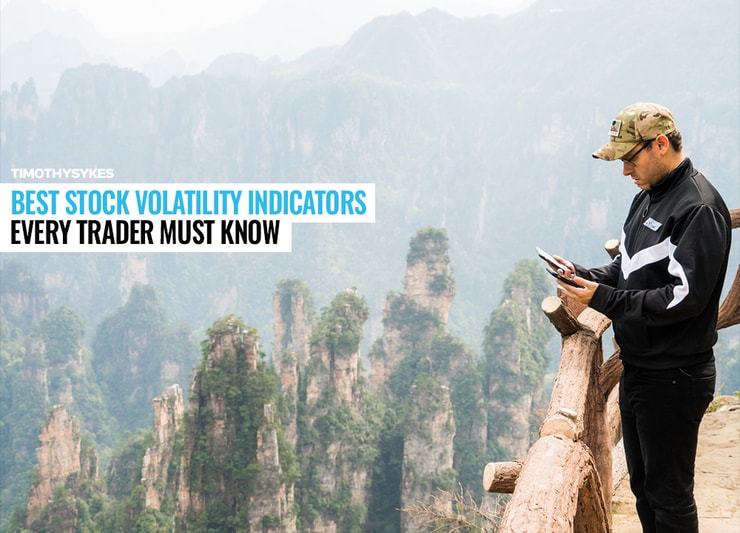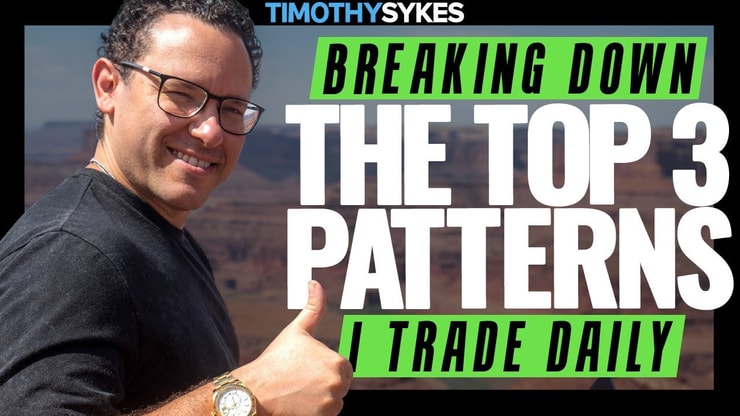*Written by AI, Edited by Humans
“Volatility Indicator” — if you’re new to the trading scene, you might’ve stumbled across this term. It’s one of those essential tools in the toolkit of every serious trader, but what does it really mean? In the market, where constant changes and fluctuations are the norms, volatility indicators give traders a way to measure market volatility and make calculated decisions. Whether you’re an experienced trader or just starting out, understanding these indicators is crucial. In this article, we’ll take an in-depth look into the world of volatility indicators, their different types, and how you can leverage them to your advantage.
Table of Contents
What Is a Volatility Indicator?
Volatility indicators are statistical measures used to analyze the degree of variation in a trading price series over a specific period. They allow traders to assess the amount of uncertainty or risk involved in a price change. Knowing this information can be key in making sound trading decisions. Whether you’re dealing with stocks, futures, forex, or other financial assets, volatility indicators can be an essential part of your strategy. In the next sections, we’ll dive into the importance of volatility in trading and discuss various indicators that reflect volatility in the market.
Why Is Volatility Important in Trading?
Volatility is the statistical measure of the dispersion of returns for a given security or market index. It provides traders with an insight into the degree of variation of a trading price over time.
Why does it matter to us? Well, volatility is vital in trading as it reflects the level of risk associated with the price changes of a security. Understanding this concept enables traders to gauge market conditions, make predictions, and optimize trading strategies to gain profits or minimize losses. It’s not just about reading numbers; it’s about making those numbers work for you.
8 Volatility Indicators That Reflect Volatility in the Stock Market
There’s a wide range of volatility indicators available to traders. By utilizing these tools, traders can better understand market conditions and make informed decisions. Here’s a look at eight critical volatility indicators that can provide valuable insights into market fluctuations and trends.
Understanding market trends and patterns is essential for traders. One such concept that traders often explore is the Money Flow Index (MFI) indicator. This oscillator-type indicator helps in identifying overbought or oversold conditions in a market. It’s a valuable tool that can be used in conjunction with other oscillators to make informed trading decisions. If you’re interested in learning more about oscillators and how they can be used in trading, you might find this guide on the MFI indicator helpful.
Cboe Volatility Index
Known as VIX, the Cboe Volatility Index is a popular measure of market risk and volatility. It’s often referred to as the “fear gauge” and provides an instant snapshot of investor sentiments. This indicator is crucial for those looking to understand market behavior, especially during turbulent times.
More Breaking News
- VCIG’s Latest Moves: A Boom or Bubble in the Making?
- Is Rocket Lab Skyrocketing Toward New Heights After Recent NASA Contract Win?
- Rezolve AI Unveils Bold Partnerships and Debt Conversion: Future Market Potential on the Rise?
Average True Range
The Average True Range (ATR) is a volatility measure that gives an average of high-low ranges over a specific period. It’s a versatile tool that offers a view of market volatility, allowing traders to adjust their positions accordingly.
Bollinger Bands®
Bollinger Bands® are a technical analysis tool that encapsulates a range of price levels. These bands are an excellent way to measure market volatility and provide traders with potential entry and exit points for trades.
Keltner Channel Indicator
The Keltner Channel Indicator is another valuable tool in a trader’s arsenal. Based on moving averages and Average True Range, this indicator helps traders identify potential price channels. Investors often use this tool to spot overbought or oversold conditions in the market. Remember, understanding these tools is about making your money work for you, assessing the market, and planning your strategies. A company that knows how to use these tools has access to powerful insights, which can be crucial for performance and growth.
Donchian Channel Indicator
Meet the Donchian Channel Indicator, named after its creator, Richard Donchian. This indicator highlights the highest high and the lowest low over a set period. It’s a reason many traders use it to identify potential breakout or breakdown points. For investors who need access to various products, this indicator can provide valuable insights into market trends. In the world of finance, where indices and option prices change rapidly, understanding these tools can be your ticket to making more informed decisions.
Chaikin Volatility Indicator
The Chaikin Volatility Indicator is a tool that measures the volatility of a security by comparing the spread between the highs and lows of a day. It’s often used in conjunction with other technical indicators, offering a broader view of market conditions. In the world of ETFs, investing with a clear understanding of volatility can give you a clear edge. Knowing when to stop, and having a robust system in place, is crucial, and the Chaikin Volatility Indicator can be a part of that system.
Twiggs Volatility Indicator
Twiggs Volatility Indicator is a unique tool that reflects true ranges over time. Created by Colin Twiggs, it focuses on the average true range and compares it to a moving average of the true range. This content-rich method provides a different angle on market volatility, and seasoned investors often utilize it to enhance their trading strategies. In a world where bid prices change in seconds, understanding these tools can be crucial for consistent performance.
Relative Volatility Index (RVI)
The Relative Volatility Index (RVI) is another fascinating volatility indicator that focuses on the direction of volatility. It takes the standard deviation of an asset’s higher daily closes over a specific period. Like other volatility indicators, it plays an essential part in understanding market dynamics. With the right sources and examples to guide you, RVI can be a potent addition to your trading approach.
Popular Trading Strategies to Trade Volatility
Understanding volatility is one thing; using it to your advantage in trading is another. Let’s discuss some popular trading strategies to trade volatility. From options to leveraging market data, these approaches can become part of your trading toolkit.
In the world of trading, strategies are often built around specific patterns and indicators. The TTM Squeeze is one such indicator that can be used to identify periods of consolidation in a market. It’s a tool that can help traders anticipate potential breakouts or breakdowns. By understanding how to leverage the TTM Squeeze, traders can make more informed decisions and potentially increase their profits. For those looking to delve deeper into this concept, here’s a comprehensive guide on TTM Squeeze and how it can be utilized in trading.
It all comes down to your trading platform.
When it comes to charting, StocksToTrade is first on my list. It’s a powerful trading platform that integrates with most major brokers. I helped to design it, which means it has all the trading indicators, news sources, and stock screening capabilities that traders like me look for in a platform.
Grab your 14-day StocksToTrade trial today — it’s only $7!
How to Trade Low Volatility
Low volatility trading requires a unique approach. It involves understanding the market dynamics and employing specific strategies tailored to these conditions. Here are some ways to trade low volatility.
Low volatility trading can be a complex area to navigate. It requires a deep understanding of various strategies and tools. One such tool that traders often use is the concept of pivot points.
Pivot points are used to identify potential support and resistance levels in the market. They can be a crucial part of a trader’s toolkit, especially when dealing with low volatility conditions.
If you’re looking to enhance your understanding of pivot points and how they can be used in trading, consider exploring this detailed guide on pivot points trading.
Buying Calls
Buying calls is an options trading strategy used to gain from an increase in the underlying asset’s price. It’s a way to leverage market volatility, taking advantage of price fluctuations to secure profits.
Puts
Puts are the opposite of calls. It’s an options strategy where the trader expects the price of the underlying asset to decrease. Using puts in low volatility can be a risk-management technique, offering protection against unexpected market downturns.
Long Straddles
Long straddles are an options strategy that involves buying both a call and a put with the same strike prices and expiration dates. This strategy can be employed in low volatility conditions to potentially profit from significant price movements in either direction.
Debit Spreads
Debit spreads involve buying and selling options of the same asset but different strike prices. It’s a strategy that can be applied in low volatility markets, providing a way to achieve consistent returns while managing risks.
They aren’t a silver bullet for your trading plan — but volatility indicators are some of the many topics you should learn as part of your trading education!
Trading isn’t rocket science. It’s a skill you build and work on like any other. Trading has changed my life, and I think this way of life should be open to more people…
I’ve built my Trading Challenge to pass on the things I had to learn for myself. It’s the kind of community that I wish I had when I was starting out.
We don’t accept everyone. If you’re up for the challenge — I want to hear from you.
Apply to the Trading Challenge here.
Trading is a battlefield. The more knowledge you have, the better prepared you’ll be.
Do you use volatility indicators in your trading strategy? Let me know in the comments — I love hearing from my readers!
Frequently Asked Questions
Volatility indicators and trading strategies often lead to a plethora of questions. Let’s address some of the most common inquiries that arise in the world of trading volatility.
What Is the Best Measure of Volatility?
The best measure of volatility can vary based on individual trading goals, assets, and market conditions. Some may prefer the Cboe Volatility Index (VIX) for a broad market view, while others might rely on Average True Range for specific stocks. It often boils down to personal preference and trading style.
Can Volatility Indicators Predict Future Market Movements?
Volatility indicators can provide insights into market conditions and trends, but predicting future market movements is not always straightforward. Utilizing various indicators, along with thorough research and analysis, can enhance predictions but never guarantees results.
How Do Different Volatility Indicators Interact and Complement Each Other?
Different volatility indicators offer unique perspectives and can be used together to create a more nuanced understanding of market behavior. For example, Bollinger Bands® can be paired with the Relative Volatility Index to understand both short-term price movements and overall market trends.




Leave a reply